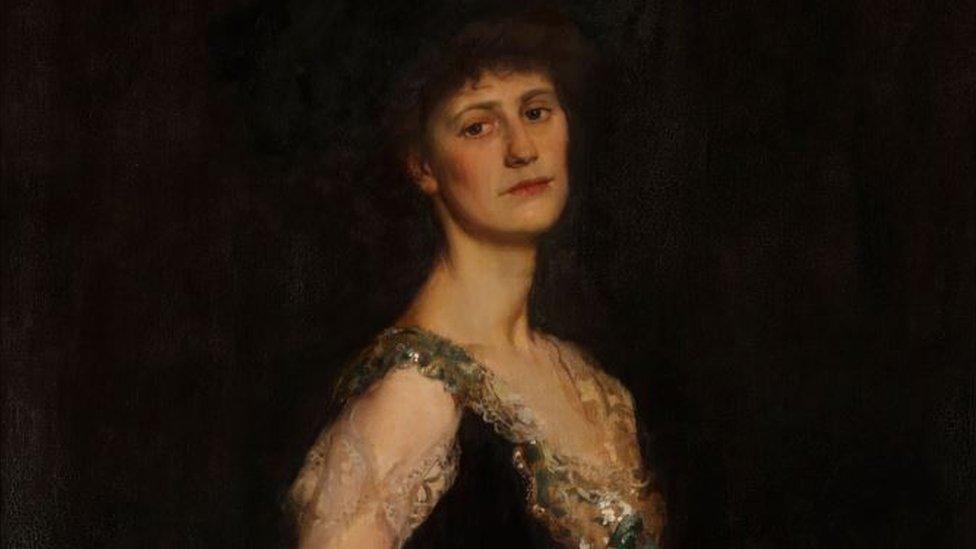Radicals and reformers: Women's faces from the fight for votes
- Published
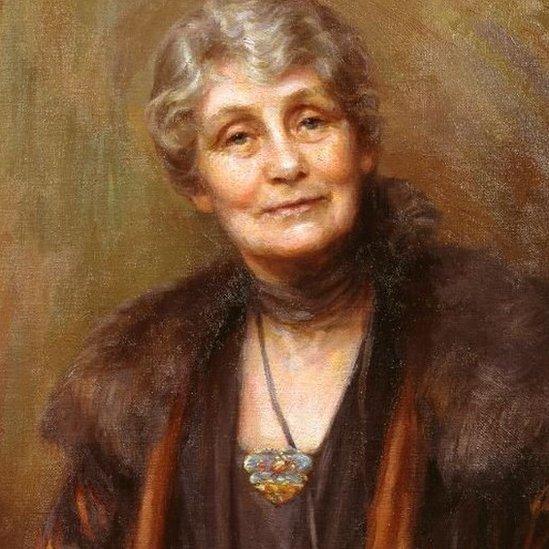
Emmeline Pankhurst is one of the celebrated suffragettes featured in the exhibition
Portraits of some of the leading figures of the women's suffrage movement paint a picture of the struggle for the right to vote in a unique new exhibition.
Faces of Change: Votes for Women can be seen at Mount Stewart, the National Trust property in County Down, until February, marking the centenary of the 1918 Representation of the People Act.
Many of the works of art, photographs and documents are on loan from the National Portrait Gallery in London.
Rarely seen portraits of suffragette leader Emmeline Pankhurst, and her daughters Christabel and Sylvia form part of the exhibition.
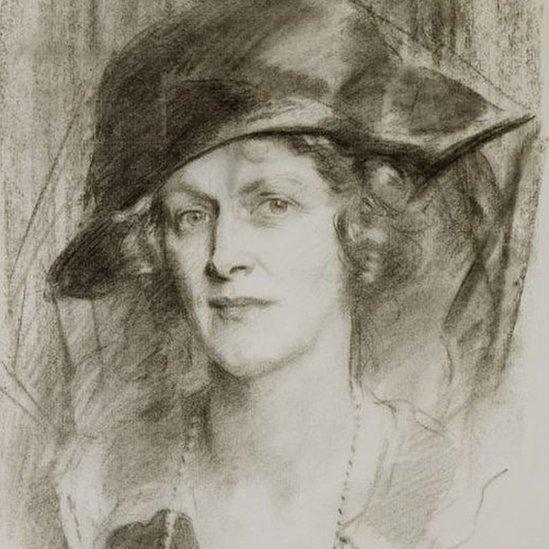
Nancy Astor was sketched by society portraitist John Singer Sargent
A drawing by John Singer Sargent of Nancy Astor, the first woman to take her seat as an MP in the House of Commons, represents the legacy of the women's campaign.
Astor had no record of suffragist beliefs and won her husband's Plymouth Sutton seat after he inherited his father's title and moved to the House of Lords.
Items from Mount Stewart's own collections focus on the suffragist activities of Edith, Lady Londonderry, who lived at the country house.
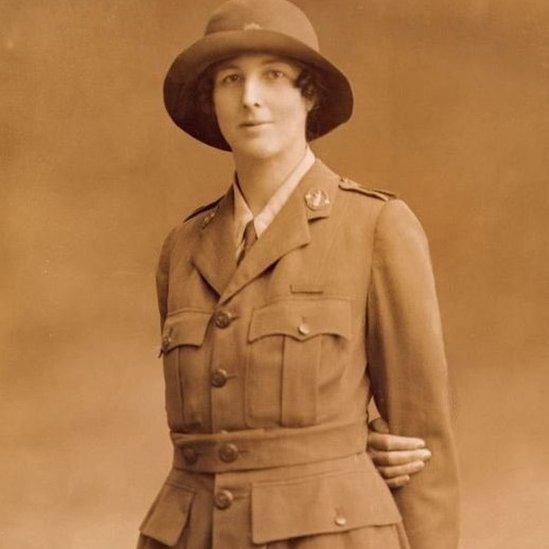
Edith, Lady Londonderry, founded the Women's Legion in World War One
Suffragettes and suffragists both wanted votes for women but they took very different approaches to get it.
The non-violence of suffragists was rejected by suffragettes who frequently damaged property.
Lady Londonderry's story is used to contrast the tactics of the peaceful suffragists and those of the militant suffragettes.
Her pro-suffrage campaigning is said to have led her mother-in-law to describe Edith as "a young hound running riot".
"She wasn't a suffragette, she didn't believe in violent means," said Dr Neil Watt, Mount Stewart's house and collections manager.
In fact, Edith was opposed to women becoming parliamentarians and argued that point with Lady Astor.
"She also set up her own private army during the First World War," added Dr Watt.
This was the Women's Legion, an organisation made up of volunteers who wore military uniform and took on duties in agriculture, catering and transport.
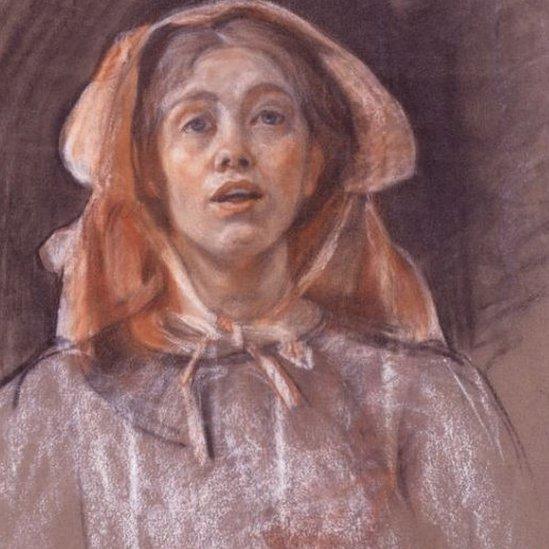
Suffragette leader Sylvia Pankhurst was force-fed during her time in prison
During the radical suffragette campaign, some women carried out attacks on works of art in an attempt to publicise their cause.
In 1914, Mary Richardson infamously slashed the Velasquez painting known as the Rokeby Venus in the National Gallery.
The Mount Stewart exhibition includes a sheet of identity photographs of suffragettes issued to the National Portrait Gallery by the Metropolitan Police following the slashing incident.

Constance Markievicz was the first woman elected to Parliament but refused to take her seat at Westminster
The display is part of a drive by the National Trust to create new experiences in its historic properties in association with other organisations - apart from the National Portrait Gallery, this exhibition includes works from the collections of the Ulster Museum and the Imperial War Museum.
Another collaborator is Lissadell House in County Sligo, the family home of Countess Markievicz, the Irish republican who was elected to parliament before Nancy Astor but never took her seat.
Neil Watt said the exhibition is about "being unafraid to discuss and promote histories that are off the mainstream".

The Londonderrys of Mount Stewart were well known as a politically-engaged members of the aristocracy
The Faces of Change exhibition opened on 9 November and runs from Thursday-Sunday 11:00-15:00 GMT until 3 February
- Published18 July 2018
